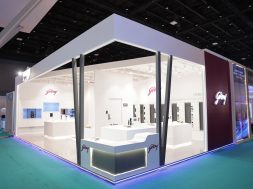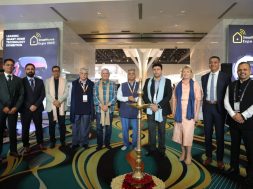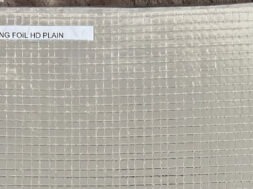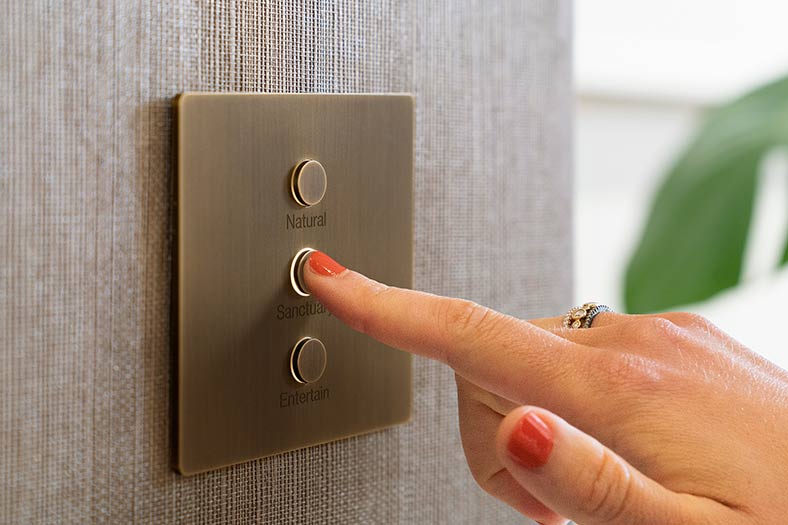Green Living [Oct 2011]
What started with indoor air quality (IAQ) that is safer for people has grown into a holistic movement that includes a concern towards building practices, energy saving, use of environment friendly material, green buildings, sustainability and much more. Indoor environment quality (IEQ) has replaced the term IAQ in a much broader way. Healthy IEQ and reduced energy use and waste are now widely seen as being good for building users, as well as good for the environment.
Understanding indoor air quality (IAQ)It is important to understand the basic concept of IAQ which is the first step towards healthy living and going Green. The combination of ‘tight’ buildings with little or inadequate fresh air ventilation, produce an indoor environment with relatively high levels of chemical contaminants, bacteria, fungi and dust. Indoor air in an air-conditioned/mechanically ventilated space can be several times more polluted than outdoor air.
The larger concentration of indoor air pollutants, combined with the fact that most people spend 85 to 90 per cent of their time indoors, make them susceptible to illnesses related to these airborne contaminants. Common pollutants contributing to poor IAQ are mold, dust mites, pollen, viruses, cleaning products, paints, smoke, tobacco products, solvents, asbestos insulation and carpets etc.
Effects of poor IAQ on health and productivitySick building syndrome (SBS), an outcome of poor IAQ, is the condition of a building in which more than 20 per cent of the occupants suffer from adverse health effects, but with no clinically diagnosable disease present. Poor IAQ and SBS reports adverse consequences, other than occupational health problems, as loss of productivity and legal liability.
Improving IAQ through better ventilationThe solution to the problem of pollution is dilution or increased ventilation, run contrary to the energy conservation guidelines being followed by air-conditioning designers for the buildings. However standards and guidelines being dictated by ASHRAE standards for IAQ, establishing generally 20 cubic feet per minute (cfm) per person as recommended outdoor air requirement, has set new challenges for equipment manufacturers to meet the needs of the building owners and designers for matching the IAQ requirements with energy conservation needs.
Fresh air equipment are the solutionRecent heightened media attention on public health and energy conservation needs provide a good wake-up call to revisit best building practices. Buildings need such HVAC Systems that provide the optimum environment, to overcome health concerns, in a simple, direct and cost effective way. Energy recovery wheels, treated fresh air units and energy recovery ventilators are such HVAC Systems that help to increase ventilation as well as save energy. These systems help to maintain IAQ requirements and recover energy from exhaust air, resulting in considerable reduction in installed tonnage and utility bills. They also assist in enhancing IAQ, maintaining desired temperature and humidity and increasing productivity. These systems also provide substantial green building LEED points for: Energy saving, improved IEQ, and innovative new technology.
Most building owners in India have already begun to take this direction. But the real advantage will come if there is a concerted and mandated requirement that not only mandates the amount of fresh air to be used/provided for the occupants but also mandates energy conservation equipment installed to recover energy required to treat/ condition such large quantities of fresh air.
India is not only producer but also a significant exporter of such energy recovery wheels, and therefore availability of equipment is not a limiting factor.
DRI is a fast growing HVAC&R company with a global footprint providing a complete line of desiccant based products and systems for energy recovery, IAQ, fresh air treatment, evaporative cooling, humidification, RH control and green buildings. The company’s product range includes energy recovery ventilators (ERVs) and treated fresh air units (TFAs) incorporating the EcoFresh heat wheels for fresh air treatment and IAQ, evaporative cooling pads for humidification/ evaporative cooling & arctic coolers incorporating EcoCool pads for cooling large spaces.
DRI’s ‘Green’ products help to optimise energy performance of air conditioning systems resulting in considerable reduction in installed tonnage, reduction in utility bills for entire life cycle, enhanced IAQ and productivity and reduced health risks as well as leading to achieve rating points for energy certification programs like Greenstar and LEED. These products are maintaining IAQ in prestigious buildings all over the world: Beijing Airport, China; Olympia Technology Park, India; Thai Parliament, Thailand; National Theatre, Malaysia; Pacific Controls, Dubai; K.E.M Hospital, Australia; The City, Brazil; University of North Carolina Science & Media, USA and much more. n
For more details, visit www.drirotors.com
Cookie Consent
We use cookies to personalize your experience. By continuing to visit this website you agree to our Terms & Conditions, Privacy Policy and Cookie Policy.









